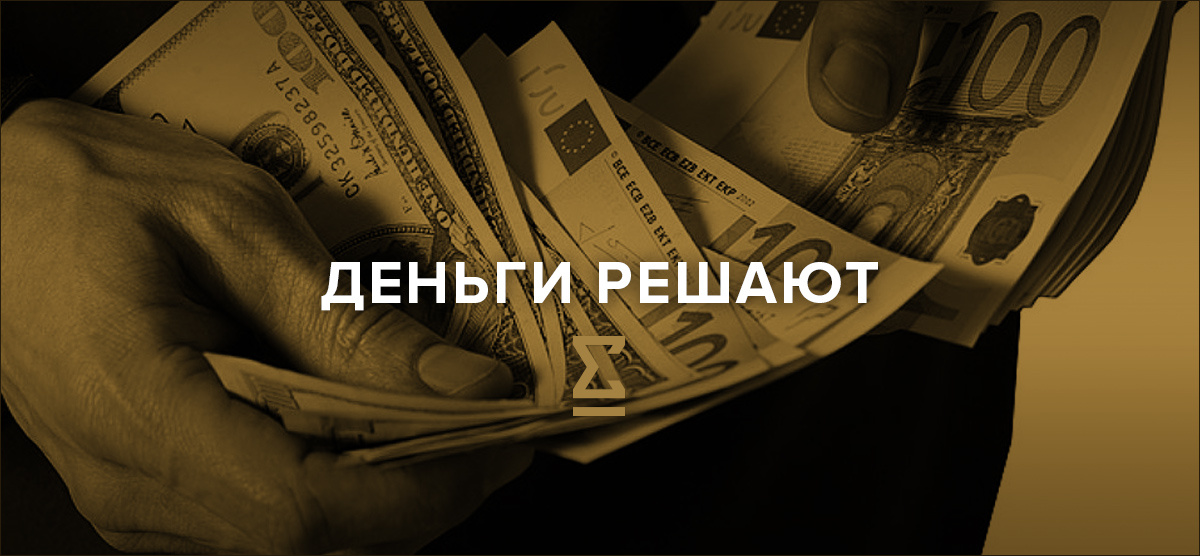
Here we come to the most interesting: the answers to the intimate questions “Where does the data come from?”, “Where is decentralization?” And “What if?”. In the last publication we mentioned the core of the system, which ensures the operation of the very concept of Stable Coin - the XRSS program. Today, look under the hood and see how it works.
XRSS in a nutshell
XRSS - XRONOS real-time stabilization system - the main "highlight" cryptocurrency aggregator XRONOS. It can be described as a “distributed digital central bank”. Some of its “divisions” (subprograms) are responsible for all analytics, others are responsible for managing the emission and demission of funds, and still others act as “digital gold and currency reserves”. In sum, we get such a "magic box": at the entrance - cryptocurrency and open data, at the exit - a stable coin.
In order to understand the logic of the system was easier, we will have to run a little forward and study the processes in the abstract future world, where XRONOS is already a Stable Coin.
Reference and means of expression
The price of 1 XPO is tied to two factors of the real economy. First, it is equal to one GAW. By itself, GAW is not a currency or an asset, but an average world index expressing the cost of working hours on the planet. It is calculated based on data officially provided by
OECD member states. Those, in turn, are based on data from tax services and other agencies involved in statistics: the value is far from ideal, but we still have nothing better. At the same time, in order to eliminate the imbalance of exchange rates, it is not a direct transfer of wages according to exchange estimates, but a transfer through so-called
purchasing power parities .
Secondly, GAW itself is expressed in SDR (SDR).
Special Drawing Rights is an index used by the IMF for internal settlements between member countries of the fund. It consists of the five largest currencies in the world in proportion to the strength of their economies on the world stage. It turns out something like a very powerful multicurrency basket, whose total weight is so large that it remains relatively stable for any unrest of exchanges.
We figured out where the price of one XPO comes from: it is tied to two “average” indicators of the global economy. Under current conditions, they can be considered fairly stable and reliable so that they can be relied upon. It remains to deal with the provision of coins and their liquidity.
The method of work: “Step to the left, step to the right - shooting”.
XRSS consists of 4 elements: three chronobot programs (XBA, XBE and XBG) and a cryptocurrency basket (CCB). Chief in all this get-together - chronobot analyst XBA. XBE and XBG are engaged in the issue and withdrawal of funds from the market. A cryptocurrency basket is only a tool for accumulating cryptocurrency reserves: a kind of digital stabilization fund. In general, everything is simple: the analyst takes data on GAW and SDR, considers the price of 1 XPO and orders the other two bots to offer emissions at the level of GAW + 1% and demmission for GAW -1%. It turns out a two percent corridor in which the currency can fluctuate: selling it more expensive or buying it cheaper for speculators is not profitable - users will prefer to work with the “central bank”. And making a difference of 2% is quite difficult. Congratulations, the course is stabilized.
What makes XRSS reliable?
With the overall functioning of the system, we more or less figured out, it's time to go to the important features.

Decentralization
Today, all XRSS tools are located on the same servers as the starting 6 master nodes. Technically, the system is decentralized, politically - for the
time being - no. All calculations are made independently, for work in the normal mode, a consensus is needed> 80% of the master node. In the near future (approximately - after ICO), master nodes will become available to users, the Proof-of-Stake protection will fully work, and the system will gradually gain complete decentralization in the area of work decision-making.
Q: Why don't you make the master nodes available now?
A: There are a number of reasons. First, we must be 100% sure that there are no errors in the code. A detailed audit was ordered from several large companies, an internal audit is being carried out: we checked the functionality, but who knows where and what bug can come up? All this takes time, and the nodes themselves need additional tests in the form of live load, which Presale will provide us with.
Secondly, the political decentralization of the network and the implementation of PoS-algorithms require the presence of a certain amount of coins in circulation - and for this it is necessary to carry out the main issue on the Presale and ICO.
Thirdly, there is some know-how element here. Releasing a genie back into the bottle can not be driven, and to give possible competitors or fraudsters access to code analysis before the system sets any weight - risks that I would not like to be passed on to users.
Supply and demand balance
Since XRONOS does not use mining as a source of new tokens, the release of new coins into circulation is made through their redemption on the stock exchange. The question “How much to sell?” We have already decided a little higher, the answer to “How much to sell?” Is extremely simple: how much the market requires.

If the offer on the exchanges is higher than the demand - the issue is not made at all, users buy coins from other network participants who need to withdraw funds to the crypt or fiat money. As soon as it sags (or the rate crawls above the cherished GAW + 1% estimate), an emission bot comes into play: at the command of the analyst, he exposes a wall of orders to sell XPO at a given rate and regulates the flow of funds into the system. The proceeds from the sale of funds fall into the cryptocurrency basket.
CCB - Cryptocurrency basket
In essence, this is a diversified storage for cryptoactive assets. Based on data from a bot-analyst, XBG buys a package of "crypt" in accordance with the market situation: preference is given to the most actively traded and stable coins. Their total capitalization is from 90 to 98% of the cryptocurrency market.
Thus, XBG acts as a manager of the “digital central bank”: it manages accumulated cryptoactive assets and guarantees the liquidity of the XRONOS coins. About 40% of collateral is in cold storage, the remaining 60% is used on the exchanges as a cryptocurrency basket - you already know how it works.
His role in maintaining market balance is the XPO coin issue. Putting them in fiat money, if in a simple way. If the market offers for the sale of XPO below the demand for their purchase, coins are bought by the bot at the rate of GAW-1%. Purchase funds are taken from
CCB.The current state of the cryptocurrency basket managed by chronobots is open information available on the official website at
https://stats.xronos.space and updated once a day: go, see, recount everything manually or via EXCEL - the numbers always converge.
Q: What is the guarantee of withdrawal of funds? Users will not be able to remove all cryptoactives from the system when it is stable? Will anyone be left without money?
A: Everything here is both difficult and very simple. See: the withdrawal of funds from the system is fully guaranteed by accumulated cryptoactive assets: some of them lie in the cryptocurrency basket, the other - in cold storage. But to withdraw all the money from the already stabilized system will not work, since the so-called “valid” acts. "Currency triangle".
The fact is that XPO is bought in cryptocurrency, and the price is expressed at the rate of fiat money on a certain day. In the long term, the “crypt” will only become more expensive, so a 0.01 BTC contributed once will gradually increase its dollar / euro / ruble value. As a result, when the same fixed rate is used to return funds from the system, the system will have to spend less “bitcoins” or another cryptocurrency, so all XPOs can be safely bought and sold: this will have practically no effect on the cryptocurrency rate or market sustainability. Over time, the provision of XPO with other assets will reach more than 200%: in such conditions, even serious shocks of the crypto market or mass withdrawal of funds from circulation will not leave anyone “at the bottom of the trough”.
Technically, this is somewhat against the rules of economics, and a similar imbalance of the balance of payments among ordinary currencies would lead to someone's hyperinflation or default, but since the size of the classical economy so far exceeds all the cryptocurrency in the world, this thing works. And when the size of cryptoeconomics will be at least comparable with the outdated Jamaican system, most likely, XRONOS will become such a large and complex aggregator, that in its reserves there will be not only a “crypt”.
Simulation results
In the work of a stable coin, we completely figured out. The decentralized system decides every day what to do next. Its modules perform their functions based on simple logic. The analytical bot calculates the reference value of one XPO coin and the composition of the cryptocurrency basket. Issuing - sells users new coins by 1% more expensive than this price, and income adds to storage in the cryptocurrency basket. Guarantee - buying unnecessary coins at the same 1% cheaper - that is, provides a guaranteed withdrawal of funds, fast and secure. Speculators simply have nowhere to turn. Now back in our day, when Stable Coin still does not smell.
Harsh reality
What do we have today? The cryptocurrency market is all speculatively 146%: the majority of users care little about the actual use of the crypt as a means of payment. But to make money on the "HYIP theme" - the most it.

For this reason, XRONOS can not enter the market in a stable version. It simply gets lost among more than 800 cryptocurrencies that are not of particular interest. Therefore, we decided to play on market sentiment and introduce a speculative factor in the first year of the coin’s existence: “1000% in the first year and completely transparent risks” sounds more interesting than “A coin that does not generate income and is suitable for use in an economy that does not regulate crypt, isn't it?
In order for the whole system to work with a systematic increase in the exchange rate, we came up with 4 stabilization steps: 2 Presale and ICO pairs, on which the system will be guaranteed to raise the cost of one coin.
For us, this is a tool to increase popularity, for you - users - a test drive of a system with transparent risks and the opportunity to make money on the trust placed in the project.
Q: Transparent risks? What are you speaking about?
A: The XRONOS system works according to an open scheme: we honestly talk about algorithms and post the results of their work. Anyone can double-check all the calculations and make sure that the numbers converge.
In addition, the presence of a cryptocurrency basket and a system of guaranteed return of funds automatically fix your losses at a level not lower than 80%: if you do not like the work of the aggregator or how XRSS manages your coins - you can always quit the game (the system will start to redeem XRONOS coins from the beginning of the ICO). Since only 20% of the funds collected at Presale and ICO go to the development of projects and its application markets, the remaining 80 are a guarantee of the model's performance, an increase in the provision of each coin and your personal insurance.
Questions and answers
Enough for today. Next time we will look at the four stages of stabilization in detail, tell you exactly what those 20% of the collected funds will go to and give you comprehensive information about the upcoming Presale.

In the meantime, you can ask questions about the work of XRSS (if they remain) - be sure to answer.
PS: Do not forget
to subscribe to our blog on GT. The main page and personal selections are capricious, and you won't miss anything.